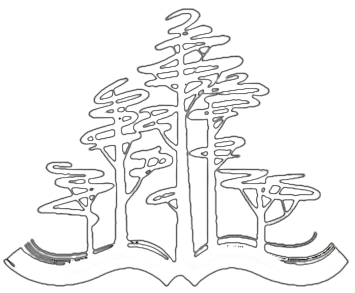Summer School on the Russian Literature. 2015.
Vol. 11. № 3
The article describes different copies of K. K. Vaginov`s last poetry collection „Likeness of Sound“. As a result of research, some main sources of the text are revealed.
Keywords: textology, Vaginov, „Likeness of Sound“.
Keywords: textology, Vaginov, „Likeness of Sound“.
Alexandra Pakhomova
Sources of the text of K. K. Vaginov's last poetry collection „Likeness of Sound“
The present article elaborates the annotations to „Podvig“ co-authored by Alexander Dolinin and Grigori Utgof (2000). It is aimed at providing the reader with corrections of factual mistakes, and includes some additions, e. g. the addition concerning a likely source of the fictional toponym „Zoorland“.
Keywords: Russian 20th Century Literature, Vladimir Nabokov, „Podvig“ („Glory“), Annotations.
Keywords: Russian 20th Century Literature, Vladimir Nabokov, „Podvig“ („Glory“), Annotations.
Grigory Utgof
„Podvig“ by V. Nabokov-Sirin
Comment to comment
Comment to comment
The purpose of this article – to analyze briefly the eclectic world of magazines „Vorobej“ and „Novij Robinson“ in 1923-1924 years, to identify the concept of the magazines for „children of a new epoh“, to comment the artistic means Marshak and his associates used „to bring up a new reader“. In poetic texts of Marshak’s early editions „new“ and „old“ canons face particularly bright. The analyzed time period – is the period of birth of new literature for children.
Keywords: „a new reader“, S. Marshak, children’s poetry, an innovative purpose, the 1920s, a dialogical, „playing tone“ of address to the reader.
Keywords: „a new reader“, S. Marshak, children’s poetry, an innovative purpose, the 1920s, a dialogical, „playing tone“ of address to the reader.
Lyubov Lukashenko
New children's literature
Features of the poetics of the magazines „Vorobej“ and „Novij Robinson“ 1923-1924, edited by S. Ya. Marshak
Features of the poetics of the magazines „Vorobej“ and „Novij Robinson“ 1923-1924, edited by S. Ya. Marshak
The paper attempts to prove that in „Cleopatra“ Akhmatova portrays herself: as a beauty, as the last poet of the perished Silver Age and as an exceptionally valuable figure which Stalinist Russia risks loosing. To this end, she deploys a cryptographic manner of writing permeating the poem. The paper also suggests that the publication of the poem paved the way towards Akhmatova’s cult as „Anna of all the Russias“.
Keywords: Anna Akhmatova, „Cleopatra“, Russian Modernism, Alexander Pushkin, cryptographic writing, women writing, cult of Akhmatova.
Keywords: Anna Akhmatova, „Cleopatra“, Russian Modernism, Alexander Pushkin, cryptographic writing, women writing, cult of Akhmatova.
Lada Panova
„Cleopatra“ by Akhmatova: self-portrait-cryptogram
The article investigates the Remizov’s autobiographical myth, based on close relations with the Poles among political exiles (writer’s North reference). The article examines images of Poles in the „Iveren“ and personal correspondence.
Keywords: аutobiographical myth, Polish culture, Polish mentality, images of Poles, Polish modernism, Polish text.
Keywords: аutobiographical myth, Polish culture, Polish mentality, images of Poles, Polish modernism, Polish text.
Olga Setkova
The images of Poles in Remizov's book „Iveren“
This paper analyzes two unpublished articles about Laurence Sterne. The first is written by a poet Sergei Bobrov – that is a review of „A Sentimental Journey“ translated by Adrian Frankovskii (1940). The author of the second text – Evgenii Lann – examines the article „Laurence Sterne“ by Izrael Vertsman written for the book „From the history of English realism“.
Keywords: Soviet literary criticism of the 1930-1940’s., Translations, Sergei Bobrov, Evgenii Lann, Adrian Frankovskii, Laurence Sterne.
Keywords: Soviet literary criticism of the 1930-1940’s., Translations, Sergei Bobrov, Evgenii Lann, Adrian Frankovskii, Laurence Sterne.
Петр Будрин
„A whole cap of wind “: Lawrence Stern in the Assessments of Soviet Criticism of the 1930s (S. P. Bobrov and E. L. Lann)
Contacts
summerschool@list.ru
В оформлении сайта использованы материалы Freepik.


